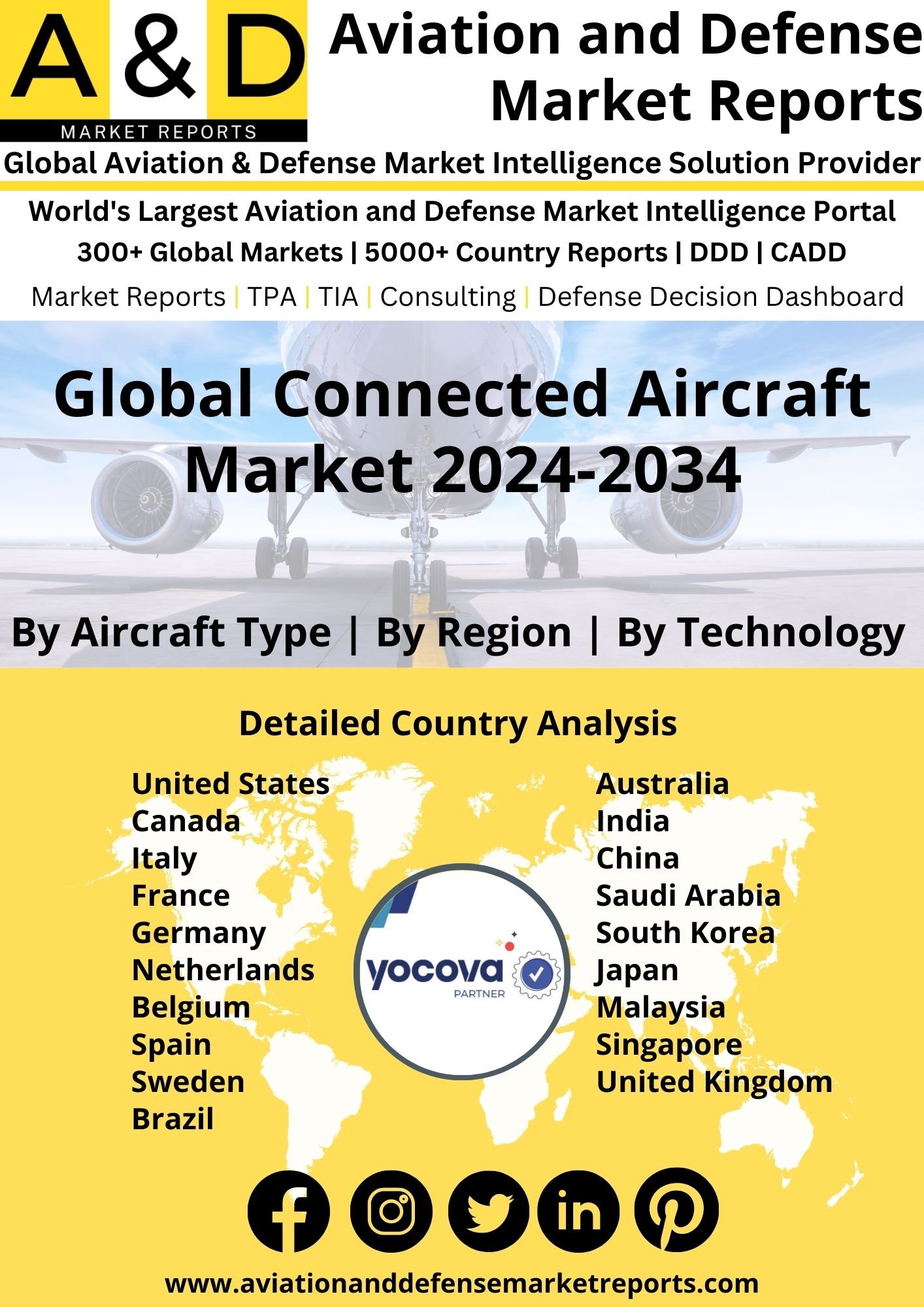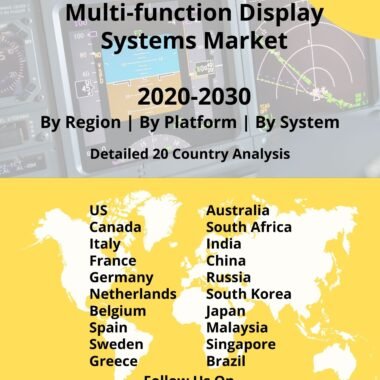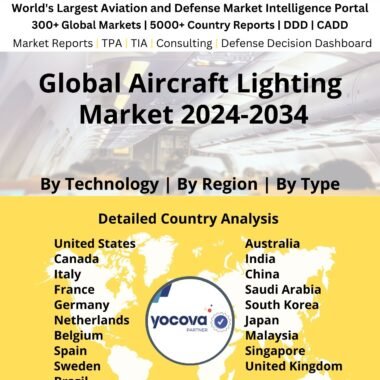Description
Frequently Asked Questions of Connected Aircraft
The connected technology inside the aircraft facilitates the aircraft operators to have a comfort and efficiency operation, and the passenger to have a wider experience. This advanced technology allows the pilot to communicate real-time data with the ground stations and with the aircraft nearby. Connected aircraft is a term comprising of IoT (Internet of things) based aircraft systems, air-to-air connectivity, air-to-ground connectivity, in-flight entertainment, and related Wi-Fi facility. 5G or 5th generation has the ability to connect everything and everyone together comprising objects. 5G will increase the data transfer and the bandwidth, in turn supporting the aviation industry. 5G in aviation is a network utilized for the effective airport and airplane operation. 5G technology in aviation enables improved communication for control towers and aircraft with time effectiveness. 5G enables to transfer real-time information. 5G has two area of operational concern; they are weather-related task and security. The GPS (Global positioning System) is a radio navigation system consists of constellation of satellites broadcasting navigation signals for monitoring and control.
Major factors driving the growth of the market
There is a boost in the growth due to the growing demand for modernization of the existing connectivity. As there is a need for an increase in operational efficiency, there arises the need to replace traditional data optimization and data connection system with more efficient systems. They include wireless electronic flight bags and broadband devices. Airlines are adopting broadband connection technologies and SATCOM in response to the growing need for passengers’ high-speed internet connectivity. During the past two decades, the financial model of airline operations and airports has changed very much, in response to the flourishing aviation sector around the world. As a result, both airlines and airport authorities are looking for ways to maintain and manage the complex ecology of airport operations and airlines. This has paved the way for the possibility of building a shared and flexible infrastructure through which the stakeholders can easily share information. This method gives both airline and airport operators access to a convergent network architecture that saves airline turnaround time and enhances customer experience. In terms of business, the shared infrastructure enables increased operational efficiency.
Trends influencing the growth of the market
Because of technological advancement, the way business communicate with their consumers, construct workflows and make business decisions is changing dramatically. Data is revolutionizing operations from pre-flight to post-flight, including seat selection, ground transportation, ticketing, luggage, boarding, etc. As the customers go through the journey, the data required for different use cases are recorded. Big data analytics includes timely reaction to future and present market demands, strategically aligned decision making and improved planning, crystal clear comprehension, and monitoring of all key performance drivers. Data analytics helps the sector to gain a better understanding of customer preferences, and other maintenance difficulties. As an example, by using a predictive analysis tool, they can target clients with customized offers with the price in real- time. Airlines obtain more bookings in the period allocated with the help of collecting useful data. Moreover, if there is a technical issue the airlines have to bear all the costs due to cancellations. The downtime is decreased in the aircraft by notifying the technical conditions that can help the maintenance crew to find issues and repair them. This is done with the help of predictive analytics in aircraft. The aviation sector has embraced the IoT (Internet of Things), artificial intelligence, and connected technologies. The IoT (Internet of Things) for the aviation industry allows to gather and collect billions of data in order to extend and enhance new business sights, airplane system management, advance operations and safety, and improve the flight experience of the entire passengers. IoT enables airplane and airlines manufacturers to monitor planes in real-time during the critical events. To determine long-term patterns, the data gathered over number of flights is analyzed. Ideal solution is enabled by reliable and secured connectivity. German researchers demonstrated an automatic landing system for aircraft, which works without the need for ground-based support system. The standard procedure at major airports are automatic landing, which have ILS (Instrument Landing System) to ensure navigation safety. An ILS is a type of navigation that provides instrument-based technique to guide an aircraft to land and approach on a runway.
Market Dynamics
The Rise in demand for existing aircraft fleet modernization will boost the growth of the connected aircraft market. Huge demand to replace conventional data optimization and data connection systems with more reliable systems to increase operational efficiency. Aircraft are equipped with wireless electronic flight bags and aircraft interface devices. There is a rise in demand for high-speed internet connectivity for various applications. Major companies are adopting broadband and SATCOM as solutions, which increases the need for alternate speeded transmission modules, this fuel the market growth. The market growth is hampered due to the cyber threats in the aviation industry. It can lead to flight cancellations along with data theft. If the terrorist can malfunction the system, then the situation is considered to be dreadful. These kinds of technology is beneficial to the company in various ways, but with this effect, the industry is prone to cyber threats.
Development
Collins Aerospace had an agreement with Japan Airlines to support a fleet of Boeing 787 aircraft with its DispatchSM flight program. The company will offer performance and communication and avionics assets to end users. Gogo business aviation AVANCE system accomplished a million flights. The company wanted to establish a strong partnership with key airlines across the globe to provide in-flight connectivity services.
American Airlines is expanding its partnership with Intelsat, with plans to install new high-speed WiFi capability on nearly 500 regional planes starting next year. The airline currently provides high-speed WiFi on more than 900 mainline aircraft, with the goal of increasing the total number of satellite-connected aircraft to more than 1,400 once regional aircraft updates are completed. Intelsat’s Electronically Steered Array (ESA) antennae are multi-orbital, interoperating on both Intelsat’s family of geostationary satellites and a constellation of Low-Earth Orbit (LEO) satellites, providing American customers with low latency high-speed internet connections. The new technology will enable these regional planes to match the fast WiFi speeds currently available on American’s mainline planes. With the planned purchase of this new technology, American is reinforcing its commitment to providing a consistent and connected experience for customers on all of its connectivity-equipped flights, allowing them to stream, browse, check email, and even log onto a VPN while on flight.






